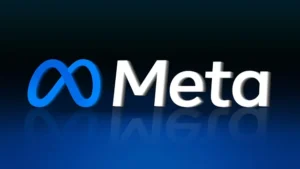In a bid to enhance transparency and combat the rise of AI-generated content, Meta, the parent company of Facebook, Instagram, and Threads, announced its plan to introduce technology capable of detecting and labeling images produced by artificial intelligence (AI) tools from other companies. The new feature, set to be deployed on Facebook, Instagram, and Threads, aims to distinguish AI-generated images and will display a note saying “Imagined with AI.” This initiative aligns with Meta’s goal to create momentum in the industry and address concerns related to AI fakery. Despite the technology being in its early stages, Meta hopes to encourage industry-wide efforts to tackle the issue.
Meta’s senior executive, Sir Nick Clegg, acknowledged the evolving nature of the technology, describing it as “not yet fully mature.” However, he emphasized the company’s intention to create momentum and incentives for the industry to follow suit. The new labeling feature, expected to be implemented in the coming months, is part of Meta’s broader strategy to address concerns surrounding AI-generated content, which has become increasingly realistic and difficult to distinguish from genuine images.
The company plans to work alongside industry peers, including Adobe, Google, Microsoft, Midjourney, OpenAI, and Shutterstock, to establish common technical standards for detecting AI-generated content. This collaboration aims to implement visible markers on users’ posts, along with invisible markers such as watermarks and embedded metadata within image files. These measures, when fully realized, will enable Meta to label AI-generated images more effectively.
Despite Meta’s proactive approach, skepticism exists within the AI community. Professor Soheil Feizi, director of the Reliable AI Lab at the University of Maryland, expressed concerns about the effectiveness of such tools, stating that they could be “easily evadable.” He highlighted the potential for lightweight processing on images to circumvent detectors, raising questions about the broad applicability of the proposed system.
Acknowledging its limitations, Meta revealed that the new tool would not extend to audio and video content. To address this, the company plans to rely on user collaboration, asking them to label their audio and video posts. Users failing to adhere to this request may face penalties, according to Sir Nick Clegg.
The announcement comes shortly after Meta’s Oversight Board criticized the company’s policy on manipulated media as “incoherent” and “lacking in persuasive justification.” The Oversight Board, independent of Meta, called for updates to the rules governing manipulated media, citing the growing prevalence of synthetic and hybrid content.
Meta’s labeling initiative reflects the company’s ongoing efforts to address concerns related to manipulated media, particularly in the context of political advertising and the potential misuse of AI-generated content. As technology continues to advance, the challenges of regulating and safeguarding against AI fakery persist, prompting major tech companies to adopt proactive measures and collaborate on industry-wide








